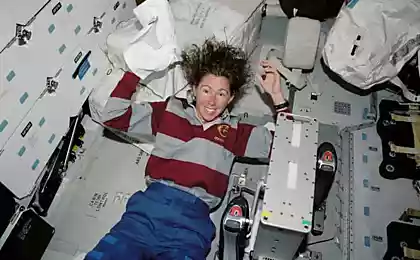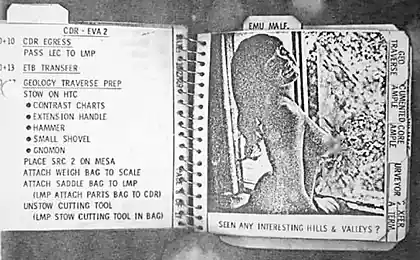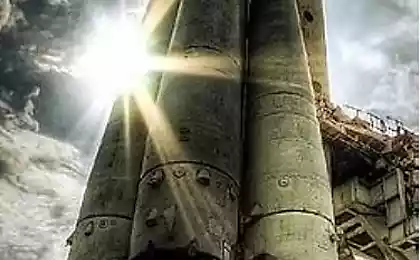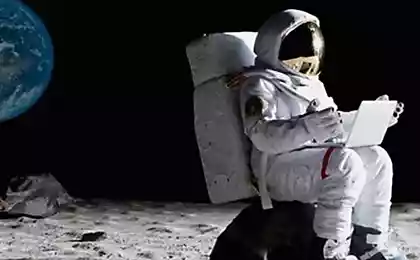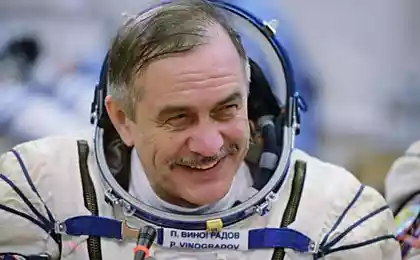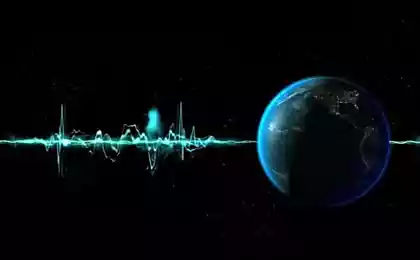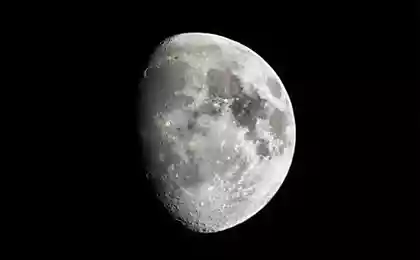1416
33 most amazing and incredible facts about space
1. The mass of the Sun is 99.86% of the mass of the entire solar system, the remaining 0.14% are planets and asteroids.
2. The magnetic field of Jupiter is so powerful that every day enriches the magnetic field of our planet billions of watts.
3. The largest swimming pool of the solar system, resulting in a collision with a space object is on Mercury. This "Caloris» (Caloris Basin), with a diameter of 1 550 km. The collision was so strong that the shock wave passed over the planet and radically changed her appearance.
4. The solar material the size of a pinhead, placed in the atmosphere of our planet, will start at an incredible rate of absorbing oxygen and in a fraction of seconds, destroy all life within a radius of 160 kilometers.
5. 1 Plutonian year lasts 248 Earth years. It oznachat that while Pluto makes just one revolution around the Sun, the Earth has time to make 248.
6. Even more interesting things with Venus, 1 day on which lasts 243 Earth days, and a year total 225.
7. Martian volcano "Olympus» (Olympus Mons) is the largest in the solar system. Its length is 600 km and a height of 27 km, while the height of the highest point on the planet, the peak of Mount Everest, reaching a total of 8, 5 km.
8. Blast (flash) supernova accompanied by the release of the giant amounts of energy. In the first 10 seconds of a supernova exploded produces more energy than the sun in 10 billion years, and over a short period of time produces more energy than all of the objects in the galaxy combined (excluding other erupted supernovae).
The brightness of these stars can easily outshines the luminosity of the galaxies in which they broke.
9. The tiny neutron star, whose diameter does not exceed 10 km, weigh the Sun (remember the fact №1). The force of gravity on these astronomical objects is extremely high and if, hypothetically, it will land on the astronaut, the weight of his body will grow by about one million tonnes.
10. 5 February 1843, astronomers discovered a comet, which was given the name "The Great" (aka the March comet, C / 1843 D1 and 1843 I). Flying close to the Earth in March of the same year, she 'raschertila' half the sky with its tail, the length of which reached 800 million. Km.
Trailing behind the "Great Comet" tail Earthlings watched more than a month, until April 19, 1843, he completely disappeared from the sky.
11. The warming we now have solar energy at the core of the Sun was born more than 30 000 million years ago - most of the time it took to overcome the dense shell of a heavenly body, and only 8 minutes to to reach the surface of our planet.
12. Most of the heavy elements in your body (such as calcium, iron and carbon) are byproducts of the explosion of supernovae group, initiated the formation of the solar system.
13. Researchers from Harvard University found that 0, 67% of all the rocks on Earth have a Martian origin.
14. Density 5, 6846 × 1026-pound Saturn is so small that if we could put it in the water, it would have floated on the surface.
15. On Saturn, Io, recorded about 400 active volcanoes. The rate of emissions of sulfur and sulfur dioxide during the eruption can exceed 1 km / s, and the height of flows up to 500-km mark.
16. Contrary to popular belief, the cosmos - it's not a total vacuum, but is close enough to it, because 88 gallons of cosmic matter is necessary, at least one atom (and as we know, in a vacuum no atoms or molecules).
17. Venus is the only planet in the solar system, which turns counterclockwise. This in theory, there are several studies. Some astronomers believe that such a fate befalls all the planet with a thick atmosphere, which first slows down and then spins a celestial body in the opposite side of the initial treatment, while others suggest that the reason was the drop on the surface of Venus Group of large asteroids.
18. Since the beginning of 1957 (the year of the launch of the first artificial satellite "Sputnik 1"), humanity has managed to literally orbit of the planet to plant a variety of satellites, but only one of them was lucky enough to repeat 'the fate of the Titanic'. In 1993, the satellite "Olympus» (Olympus), a European Space Agency (European Space Agency), was destroyed in a collision with an asteroid.
19. The largest meteorite falling to Earth as the 2nd 7 meter "Goba» (Hoba), discovered in Namibia. The meteorite weighs 60 tons and 86% consists of iron, making it the largest piece of iron in the world of natural origin.
20. Tiny Pluto is considered the coldest planet in the Solar System. Its surface is covered by a thick crust of ice, and the temperature drops to - 200 0C. The ice on Pluto has a completely different structure than on Earth, and several times stronger than steel.
21. Official scientific theory is that a person can survive in space without a spacesuit for 90 seconds if immediately exhale all the air from the lungs.
If the light remains negligible amount of gas, they will expand with the consequent formation of air bubbles, which are in contact with the blood will lead to embolism and imminent death. If the lungs are filled with gas, they just break.
After 10-15 seconds, stay in the open space water in the human body turns into steam, and moisture in the mouth and eyes begin to boil. As a result, the soft tissue and muscles swell, leading to complete immobilization.
Further, subsequent loss of vision, glaciation of the nasal cavity and larynx, blue skin, which in addition suffers from severe sunburn.
Most interesting is that the next 90 seconds will still live brain and heart beat.
In theory, if within the first 90 seconds otmuchalis in outer space astronaut loser placed in a pressure chamber, he escaped with only superficial damage and slight shock.
22. Weight of the world - it vacillates. Scientists have found that the Earth gets better every year at about 40 160 tonnes of discards and ~ 96,600 tons, thus losing 56 440 tons.
23. The Earth's gravity squeezes the human spine, so when an astronaut gets into space, he grows about 5 08 cm.
At the same time, his heart contracts, decreasing in volume and begins pumping less blood. This is the response of the body to increase blood volume to normal circulation which requires less pressure.
24. In the space tightly pressed metal parts are welded together spontaneously. This is due to the absence of oxides on their surfaces, the enrichment that occurs only in the oxygen-containing medium (a good example of such an environment can serve as the earth's atmosphere). For this reason, experts NASANatsionalnoe manage US National Aeronautics and Space Administration (Eng. National Aeronautics and Space Administration) - an agency owned by the US federal government, reporting directly to the vice-president of the United States and financed 100% from the state budget, is responsible for a civil space program countries. All the images and videos produced by NASA and departments, including using multiple telescopes and interferometers, are published in the public domain and can be freely copied. All metal parts are treated spacecraft oxidizing materials.
25. between the planet and its companion an effect of tidal acceleration, which is characterized by a slowdown in the planet's rotation around its own axis and change the orbit of the satellite. So, every century the Earth's rotation slows by 0.002 seconds, with the result that the length of the day on the planet is increasing by about 15 microseconds per year, and each year the Moon is receding from us at 3.8 centimeters.
26. 'Space whirligig', called a neutron star - is the fastest spinning object in the universe, which makes around its axis up to 500 thousand revolutions per second. In addition, the cosmic bodies are so dense that one tablespoon of their components will weigh ~ 10 billion. Tons.
27. The star Betelgeuse is from Earth at a distance of 640 light-years away and is the nearest to our planetary system, a candidate for the title of the supernova. It is so big that if you put it in place of the sun, it will fill the diameter of the orbit of Saturn. This star has gained sufficient weight to the explosion of 20 suns, and, according to some scholars, to explode in the next 2-3 thousand years. At its peak, the explosion, which will last at least two months, the luminosity of Betelgeuse would be 1050 times greater than the sun, so watch her death could be from Earth with the naked eye.
28. The nearest galaxy to us, Andromeda is located at a distance of 2, 52 million. Years. The Milky Way and Andromeda are moving towards each other at tremendous speeds (the speed of the Andromeda is 300 km / s, and the Milky Way 552 km / s) and is likely to face at 2, 5-3 billion. Years.
29. In 2011, astronomers discovered a planet made up 92% of the ultra-dense crystalline carbon - diamond. Precious celestial body that is 5 times bigger than our planet, and the mass of Jupiter is in the constellation Serpens, at a distance of 4000 light years from Earth.
30. The main contender for the title of the planet's habitable extrasolar system "Super-Earth» GJ 667Cc, located at a distance of only 22 light years from Earth. However, her journey to take us 13,878,738,000 years.
31. At the orbit of our planet is the waste dump of space development. Bol 370,000 objects weighing from a few grams to 15 tons orbit around the Earth at a speed of 9834 m / c, facing each other and break into a thousand smaller parts.
32. Every second the Sun loses about 1 million tons of the substance and it becomes easier to multi-billion programs. The reason for this is the ending, with its crown stream of ionized particles, called "solar wind».
33. With the passage of a certain time planetary systems are extremely unstable. This occurs as a result of weakening ties between the planets and stars around which they turn.
In such systems, the orbits of the planets are constantly shifting and may even overlap, that sooner or later lead to a collision of planets. But even if this will not happen, then a few hundreds, thousands, millions or billions of years of the planet taken away from the star at such a distance that its gravitational pull just will not be able to keep them, and they will go into the consolidated flight through the galaxy.
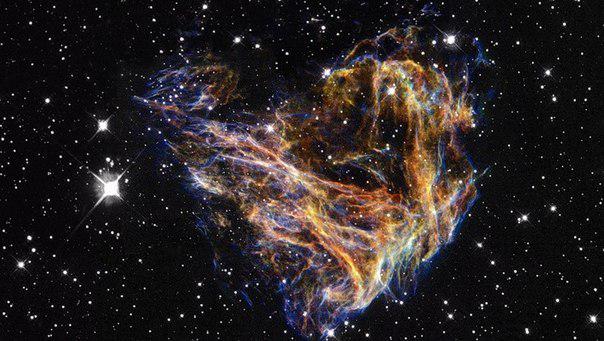
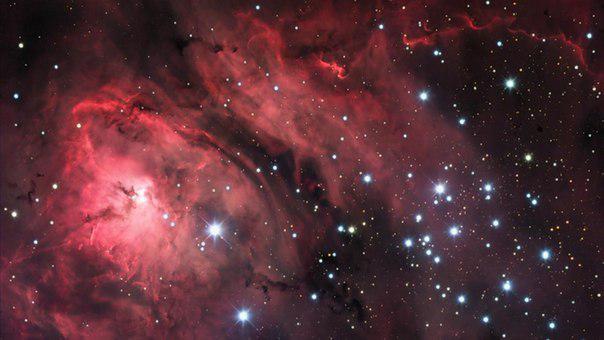
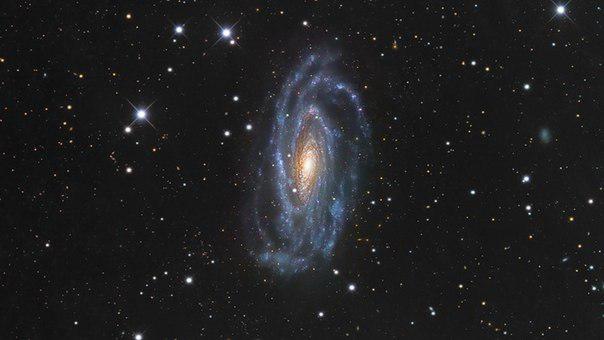
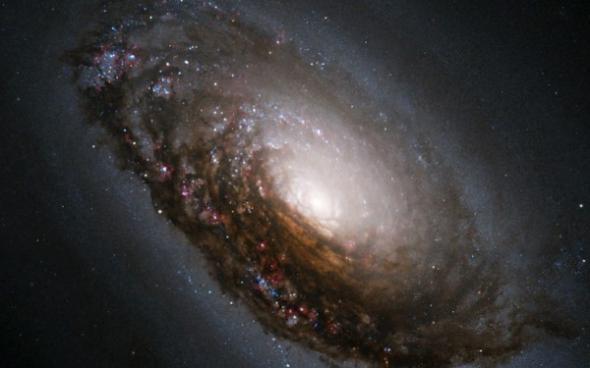
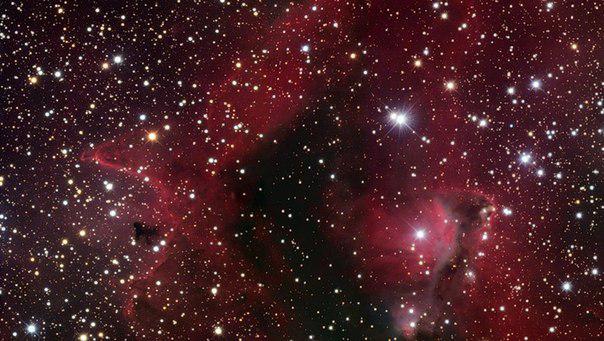
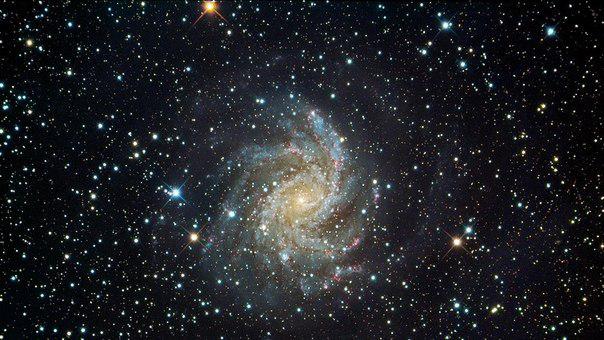
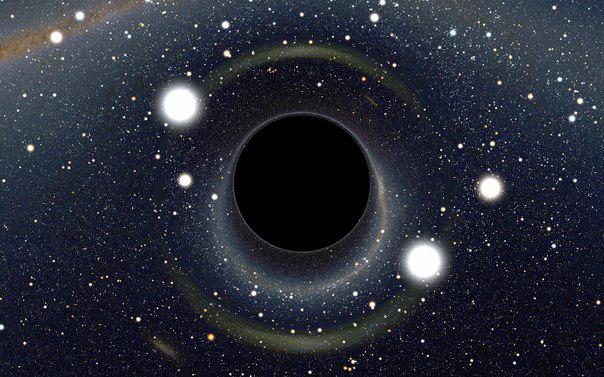
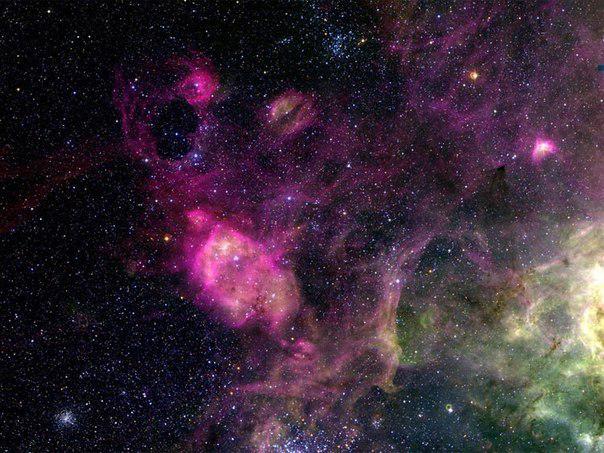
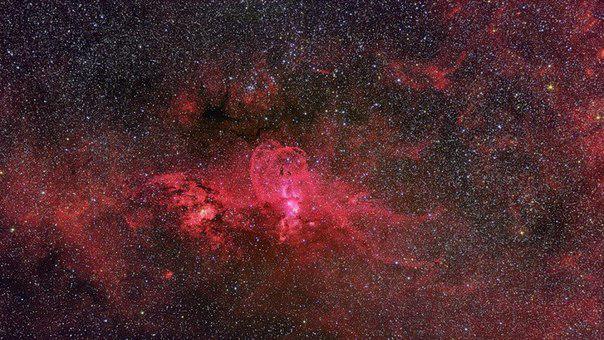
2. The magnetic field of Jupiter is so powerful that every day enriches the magnetic field of our planet billions of watts.
3. The largest swimming pool of the solar system, resulting in a collision with a space object is on Mercury. This "Caloris» (Caloris Basin), with a diameter of 1 550 km. The collision was so strong that the shock wave passed over the planet and radically changed her appearance.
4. The solar material the size of a pinhead, placed in the atmosphere of our planet, will start at an incredible rate of absorbing oxygen and in a fraction of seconds, destroy all life within a radius of 160 kilometers.
5. 1 Plutonian year lasts 248 Earth years. It oznachat that while Pluto makes just one revolution around the Sun, the Earth has time to make 248.
6. Even more interesting things with Venus, 1 day on which lasts 243 Earth days, and a year total 225.
7. Martian volcano "Olympus» (Olympus Mons) is the largest in the solar system. Its length is 600 km and a height of 27 km, while the height of the highest point on the planet, the peak of Mount Everest, reaching a total of 8, 5 km.
8. Blast (flash) supernova accompanied by the release of the giant amounts of energy. In the first 10 seconds of a supernova exploded produces more energy than the sun in 10 billion years, and over a short period of time produces more energy than all of the objects in the galaxy combined (excluding other erupted supernovae).
The brightness of these stars can easily outshines the luminosity of the galaxies in which they broke.
9. The tiny neutron star, whose diameter does not exceed 10 km, weigh the Sun (remember the fact №1). The force of gravity on these astronomical objects is extremely high and if, hypothetically, it will land on the astronaut, the weight of his body will grow by about one million tonnes.
10. 5 February 1843, astronomers discovered a comet, which was given the name "The Great" (aka the March comet, C / 1843 D1 and 1843 I). Flying close to the Earth in March of the same year, she 'raschertila' half the sky with its tail, the length of which reached 800 million. Km.
Trailing behind the "Great Comet" tail Earthlings watched more than a month, until April 19, 1843, he completely disappeared from the sky.
11. The warming we now have solar energy at the core of the Sun was born more than 30 000 million years ago - most of the time it took to overcome the dense shell of a heavenly body, and only 8 minutes to to reach the surface of our planet.
12. Most of the heavy elements in your body (such as calcium, iron and carbon) are byproducts of the explosion of supernovae group, initiated the formation of the solar system.
13. Researchers from Harvard University found that 0, 67% of all the rocks on Earth have a Martian origin.
14. Density 5, 6846 × 1026-pound Saturn is so small that if we could put it in the water, it would have floated on the surface.
15. On Saturn, Io, recorded about 400 active volcanoes. The rate of emissions of sulfur and sulfur dioxide during the eruption can exceed 1 km / s, and the height of flows up to 500-km mark.
16. Contrary to popular belief, the cosmos - it's not a total vacuum, but is close enough to it, because 88 gallons of cosmic matter is necessary, at least one atom (and as we know, in a vacuum no atoms or molecules).
17. Venus is the only planet in the solar system, which turns counterclockwise. This in theory, there are several studies. Some astronomers believe that such a fate befalls all the planet with a thick atmosphere, which first slows down and then spins a celestial body in the opposite side of the initial treatment, while others suggest that the reason was the drop on the surface of Venus Group of large asteroids.
18. Since the beginning of 1957 (the year of the launch of the first artificial satellite "Sputnik 1"), humanity has managed to literally orbit of the planet to plant a variety of satellites, but only one of them was lucky enough to repeat 'the fate of the Titanic'. In 1993, the satellite "Olympus» (Olympus), a European Space Agency (European Space Agency), was destroyed in a collision with an asteroid.
19. The largest meteorite falling to Earth as the 2nd 7 meter "Goba» (Hoba), discovered in Namibia. The meteorite weighs 60 tons and 86% consists of iron, making it the largest piece of iron in the world of natural origin.
20. Tiny Pluto is considered the coldest planet in the Solar System. Its surface is covered by a thick crust of ice, and the temperature drops to - 200 0C. The ice on Pluto has a completely different structure than on Earth, and several times stronger than steel.
21. Official scientific theory is that a person can survive in space without a spacesuit for 90 seconds if immediately exhale all the air from the lungs.
If the light remains negligible amount of gas, they will expand with the consequent formation of air bubbles, which are in contact with the blood will lead to embolism and imminent death. If the lungs are filled with gas, they just break.
After 10-15 seconds, stay in the open space water in the human body turns into steam, and moisture in the mouth and eyes begin to boil. As a result, the soft tissue and muscles swell, leading to complete immobilization.
Further, subsequent loss of vision, glaciation of the nasal cavity and larynx, blue skin, which in addition suffers from severe sunburn.
Most interesting is that the next 90 seconds will still live brain and heart beat.
In theory, if within the first 90 seconds otmuchalis in outer space astronaut loser placed in a pressure chamber, he escaped with only superficial damage and slight shock.
22. Weight of the world - it vacillates. Scientists have found that the Earth gets better every year at about 40 160 tonnes of discards and ~ 96,600 tons, thus losing 56 440 tons.
23. The Earth's gravity squeezes the human spine, so when an astronaut gets into space, he grows about 5 08 cm.
At the same time, his heart contracts, decreasing in volume and begins pumping less blood. This is the response of the body to increase blood volume to normal circulation which requires less pressure.
24. In the space tightly pressed metal parts are welded together spontaneously. This is due to the absence of oxides on their surfaces, the enrichment that occurs only in the oxygen-containing medium (a good example of such an environment can serve as the earth's atmosphere). For this reason, experts NASANatsionalnoe manage US National Aeronautics and Space Administration (Eng. National Aeronautics and Space Administration) - an agency owned by the US federal government, reporting directly to the vice-president of the United States and financed 100% from the state budget, is responsible for a civil space program countries. All the images and videos produced by NASA and departments, including using multiple telescopes and interferometers, are published in the public domain and can be freely copied. All metal parts are treated spacecraft oxidizing materials.
25. between the planet and its companion an effect of tidal acceleration, which is characterized by a slowdown in the planet's rotation around its own axis and change the orbit of the satellite. So, every century the Earth's rotation slows by 0.002 seconds, with the result that the length of the day on the planet is increasing by about 15 microseconds per year, and each year the Moon is receding from us at 3.8 centimeters.
26. 'Space whirligig', called a neutron star - is the fastest spinning object in the universe, which makes around its axis up to 500 thousand revolutions per second. In addition, the cosmic bodies are so dense that one tablespoon of their components will weigh ~ 10 billion. Tons.
27. The star Betelgeuse is from Earth at a distance of 640 light-years away and is the nearest to our planetary system, a candidate for the title of the supernova. It is so big that if you put it in place of the sun, it will fill the diameter of the orbit of Saturn. This star has gained sufficient weight to the explosion of 20 suns, and, according to some scholars, to explode in the next 2-3 thousand years. At its peak, the explosion, which will last at least two months, the luminosity of Betelgeuse would be 1050 times greater than the sun, so watch her death could be from Earth with the naked eye.
28. The nearest galaxy to us, Andromeda is located at a distance of 2, 52 million. Years. The Milky Way and Andromeda are moving towards each other at tremendous speeds (the speed of the Andromeda is 300 km / s, and the Milky Way 552 km / s) and is likely to face at 2, 5-3 billion. Years.
29. In 2011, astronomers discovered a planet made up 92% of the ultra-dense crystalline carbon - diamond. Precious celestial body that is 5 times bigger than our planet, and the mass of Jupiter is in the constellation Serpens, at a distance of 4000 light years from Earth.
30. The main contender for the title of the planet's habitable extrasolar system "Super-Earth» GJ 667Cc, located at a distance of only 22 light years from Earth. However, her journey to take us 13,878,738,000 years.
31. At the orbit of our planet is the waste dump of space development. Bol 370,000 objects weighing from a few grams to 15 tons orbit around the Earth at a speed of 9834 m / c, facing each other and break into a thousand smaller parts.
32. Every second the Sun loses about 1 million tons of the substance and it becomes easier to multi-billion programs. The reason for this is the ending, with its crown stream of ionized particles, called "solar wind».
33. With the passage of a certain time planetary systems are extremely unstable. This occurs as a result of weakening ties between the planets and stars around which they turn.
In such systems, the orbits of the planets are constantly shifting and may even overlap, that sooner or later lead to a collision of planets. But even if this will not happen, then a few hundreds, thousands, millions or billions of years of the planet taken away from the star at such a distance that its gravitational pull just will not be able to keep them, and they will go into the consolidated flight through the galaxy.


















